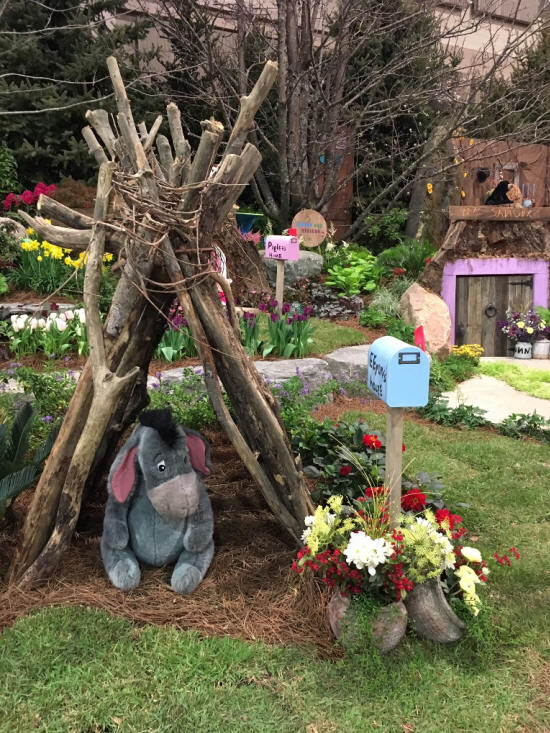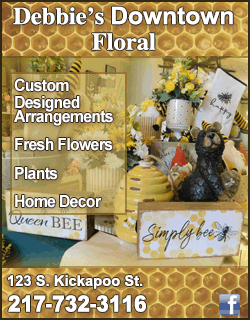|
 Make
Gardening with Kids Enjoyable Make
Gardening with Kids Enjoyable
By Melinda Myers
 Send a link to a friend
Send a link to a friend
[July 08, 2023]
Gardening is good for the mind, body, and
spirit. It is also good for the youngsters in our lives. Research
shows gardening helps relieve stress, improve focus, positively
impacts mood and psychological well-being, builds a sense of
confidence, and more.
|
|
 Look
for creative ways to get children involved in gardening. Tap into
other interests or skills like art, reading, writing, insects, math,
and computers if you need to persuade reluctant participants into
growing plants. Look
for creative ways to get children involved in gardening. Tap into
other interests or skills like art, reading, writing, insects, math,
and computers if you need to persuade reluctant participants into
growing plants.
Include lots of colors and unique plants that kids will love.
Crested celosia resembles brains, making it a good choice for the
zombie fans in the group. Eyeball plant (Acmella oleracea), balloon
plant (Gomphocarpus physocarpus) with its hairy inflated seedpods,
snake plant, and kangaroo paws (Anigozanthos favidus) are a few to
consider. Gardeners of all ages will appreciate the popcorn plant (Senna
didymobotrya) with its buttered popcorn-scented leaves or bat-faced
cuphea and the hummingbirds it will attract.
Consider adding features that make the garden a fun space to visit.
There is a reason bean teepees, sunflower houses, and tunnels in the
garden have remained popular with kids of all ages for decades. Or
grow a garden shaped like a slice of pizza planted with all the key
ingredients or a salsa garden. Everyone will benefit when using
freshly harvested ingredients to create these dishes.

A pot or flat of grass makes a nice field for
superheroes and a lawn for dolls. A bare patch of soil is perfect
for digging, driving cars and trucks, or sculpting hills and
valleys. All these build skills that can be applied to future
gardening efforts.
Plant some salad radishes that are ready to harvest in 25 to 30
days. This will help keep the kids interested in the garden when
waiting for the tomatoes, beans, and other vegetables to ripen. Call
it harvesting when you are thinning the radish planting. Use these
greens as a snack or in a salad. Harvesting and eating is more fun
for all of us than just thinning the excess plants.
[to top of second column] |

Use rainy days to create plant labels from paint
sticks or stones. Paint individual words on some of the stones and
place them in the garden. Let children leave messages for each other
or write poetry. Or repurpose pickle jars into garden treasure jars.
Have children decorate the jars. Then you fill the jars with
messages or treasures before hiding them in the garden.
Explore ways to reuse and recycle landscape trimmings. Put twigs to
use creating small-scale wattle fences for a fairy, gnome, or zombie
garden. This is great practice for building a larger-scale wattle
fence for the garden.
Go on a bug hunt to see who is living in your garden, yard, or
neighborhood. Look for good bugs like lady beetles that eat
plant-damaging aphids and bees that pollinate our flowers. Then log
what you find in a backyard journal.
Gentle guidance, realistic expectations, and age-appropriate
activities will help get kids excited about gardening. The gardens
they create and the plants they grow are often amazing but more
importantly, it is the experience of growing together that makes it
worthwhile.

Melinda Myers has written more than 20 gardening
books, including the recently released Midwest Gardener’s Handbook,
2nd Edition, and Small Space Gardening. She hosts The Great Courses
“How to Grow Anything” instant video and DVD series and the
nationally syndicated Melinda’s Garden Moment TV & radio program.
Myers is a columnist and contributing editor for Birds & Blooms
magazine and her website is www.MelindaMyers.com.
[Text from file received from
] |